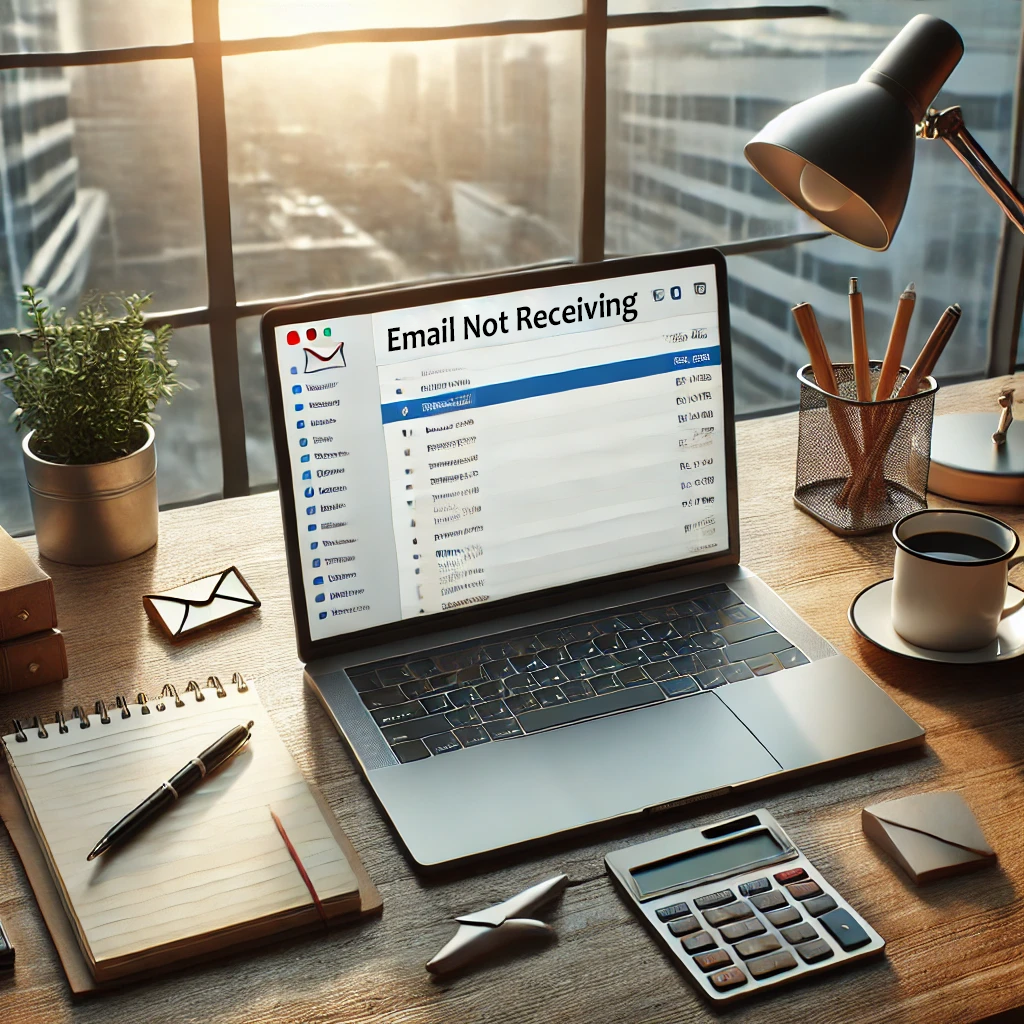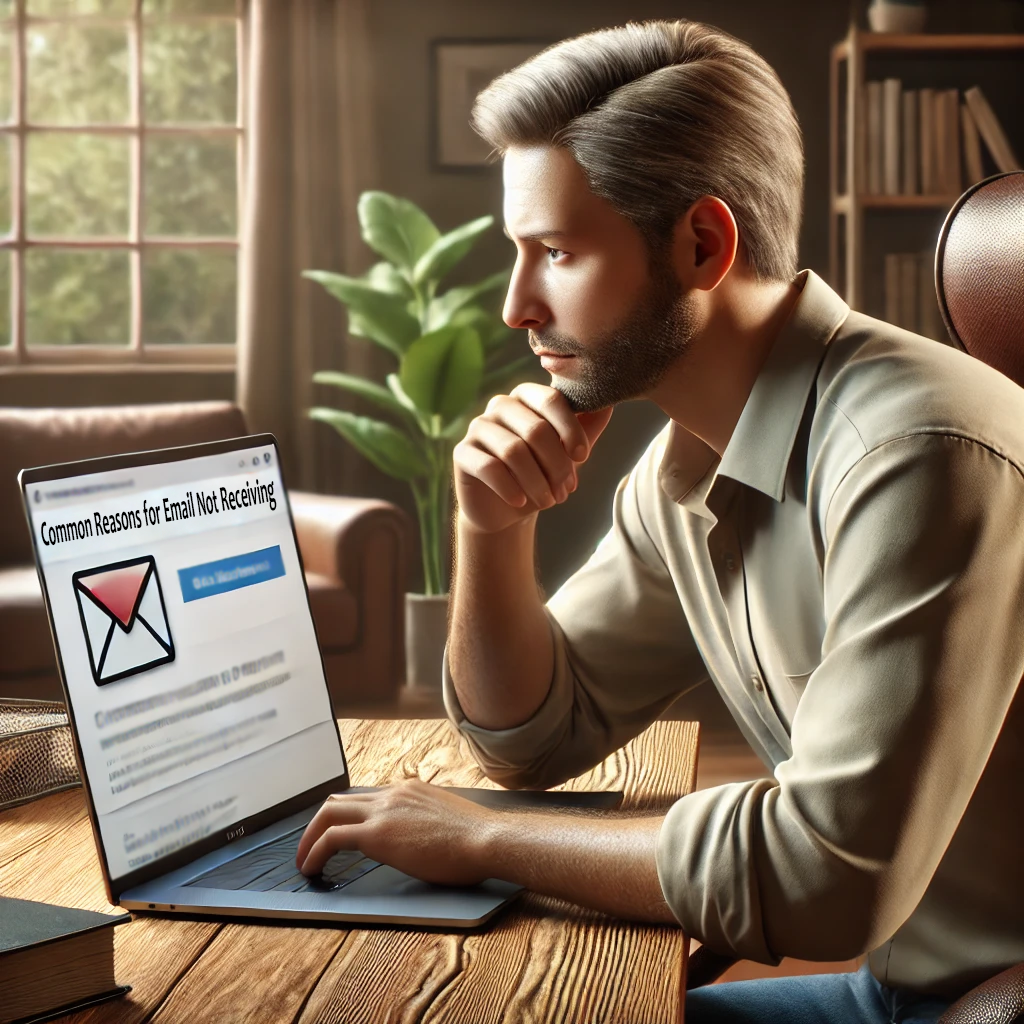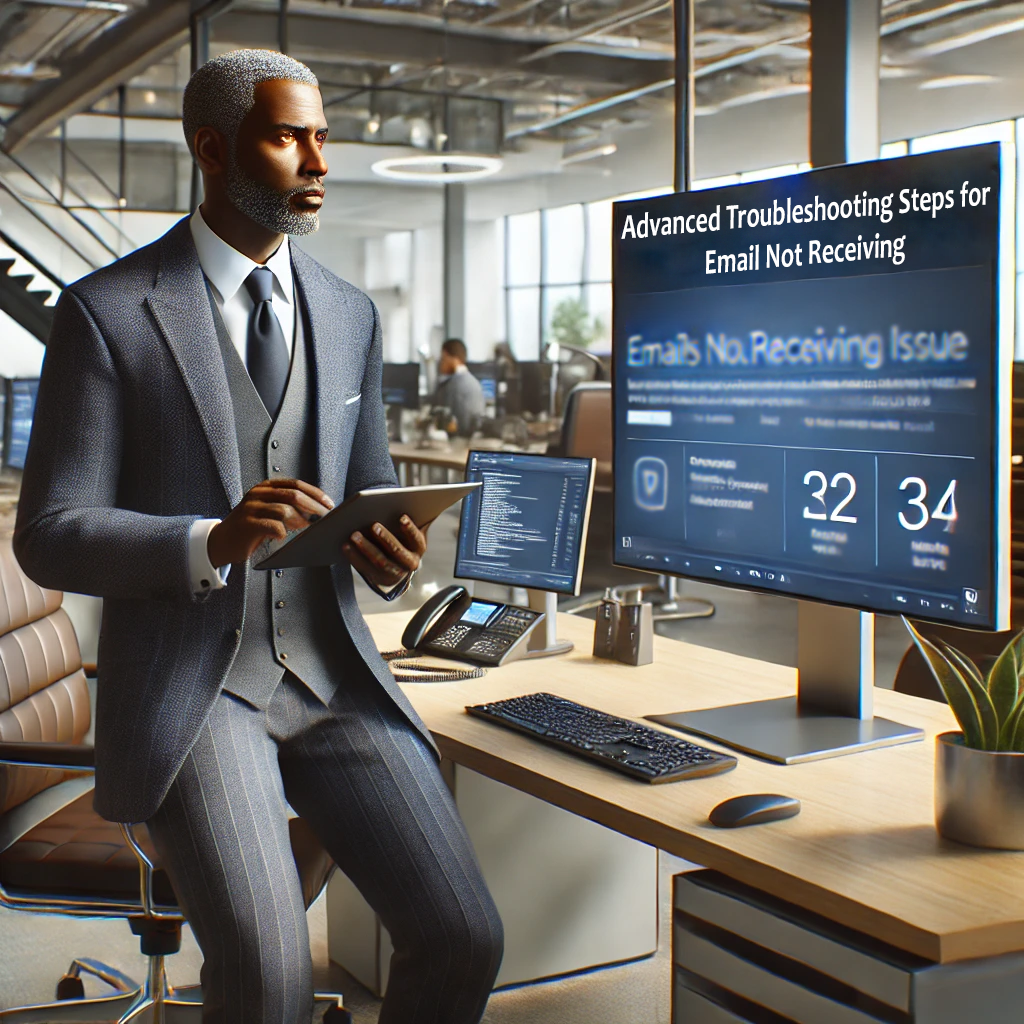Email Not Receiving
In today’s digital era, email stands as a cornerstone of both personal and professional communication. It bridges distances instantly, allowing for seamless exchange of ideas, decisions, and intimate messages across the globe. However, the dependency on email also introduces a common set of frustrations, especially when we cannot receive emails as expected. This issue can disrupt workflows, cause misunderstandings, and lead to missed opportunities.
Many users find themselves puzzled and stressed when they realize they are unable to receive emails. Whether it’s a critical job offer, an urgent business decision, or a personal message, not receiving these emails on time can have significant consequences. Moreover, situations where one is specifically not receiving emails from one person can lead to doubts about whether the message was sent at all or if it was lost in the digital ether.
The purpose of this blog post is to navigate through the fog of confusion and help you understand the various reasons why you might be not getting emails. We will explore common causes, offer straightforward troubleshooting steps, and provide preventive measures to ensure that your email not receiving issue becomes a thing of the past. By addressing these problems head-on, we aim to restore reliability and peace of mind to your digital communications.
Understanding Common Reasons for Email Not Receiving Problem
Email communication is pivotal in our daily lives, but various issues can disrupt this flow, causing significant inconvenience. Let’s explore some common problems that might result in you being unable to receive emails.
-
Email Provider Issues:
Sometimes the problem is not at your end but with the email provider Service outages, scheduled maintenance, or unexpected technical difficulties can all affect your ability to receive emails. During these times, providers usually work quickly to resolve these issues, but this can mean temporary disruptions leading to not getting emails.
-
Spam Filters:
To combat the ever-growing spam problem, email services employ aggressive spam filters. However, these filters sometimes work too well, categorizing important, legitimate emails as spam and thus, they end up in the junk folder instead of your inbox. This misclassification is a common reason why users find they are not getting emails that they were expecting.

-
Full Inbox:
A surprisingly mundane but common issue is a full inbox. Most email accounts have a limit on how much data they can hold. Once this limit is reached, new emails cannot be delivered until older emails are deleted or archived. This is a straightforward fix but is often overlooked, leading to situations where you are unable to receive emails.
-
Incorrect Email Address:
The issue might be as simple as a typo. If an email address is entered incorrectly, emails sent to this address will likely bounce back to the sender. It’s important to double-check email addresses for typos or errors to ensure that communication is not inadvertently disrupted.
-
Blocked Senders:
Another reason for emails not being received could be due to blocked sender settings. If you, or your email provider, have blocked a particular sender, their emails will not reach your inbox. Reviewing your blocked senders list can often resolve these one-off issues.
-
Server Problems:
Technical issues on the server side, such as DNS errors or server misconfigurations, can also interfere with email delivery. These problems can stem from your email provider or from issues within your own network settings if you host your own email server.
Understanding these common scenarios can help you troubleshoot why you are not getting emails. By identifying the root cause, whether it’s an issue with spam filters or something more complex like server misconfigurations, you can take the necessary steps to resolve the problem effectively. This knowledge ensures that your Email Not Receiving issue is addressed quickly, restoring the reliability of your digital communications.
Basic Troubleshooting Steps for Email Not Receiving Issue
When you find that you are unable to receive emails, it can disrupt your day. Here are some basic troubleshooting steps that can help you identify and possibly resolve common issues that might be preventing your emails from arriving.
-
Check Spam/Junk Folder:
A first and often overlooked step is to check your spam or junk folder. It’s not uncommon for emails not being received in the inbox to have been mistakenly filtered into these folders. Look through these folders and mark any legitimate emails as “Not Spam” to train your email service to recognize similar messages in the future.
-
Review Blocked Contacts:
If you’re not receiving emails from one person, it’s a good idea to check your blocked contacts list. Sometimes, we may accidentally block someone or forget about past settings that could prevent their emails from reaching us. Unblocking the sender can quickly resolve this issue, ensuring that emails from them are received in the future.
-
Verify Email Address:
Ensure that the sender has your correct email address. A simple typo in an email address can result in delivery failures, which often go unnoticed. Verifying your email address with the sender is a quick check that can prevent ongoing issues with not getting emails.
-
Inspect Email Quota:
If you are not getting emails due to a full inbox, you will need to free up space. Many email users are unaware that they have reached their storage limit until they stop receiving new messages. To resolve this, delete unnecessary emails, empty the trash, and consider archiving old emails to clear up space in your inbox.
-
Service Status Check:
Lastly, check for any service outages or maintenance announcements from your email provider. Most providers have a status page or support channels where they post updates about current issues affecting their services. This is especially useful if you suspect the problem is not on your end but rather a broader issue affecting multiple users.
These basic troubleshooting steps are often effective in resolving common problems related to not getting emails. By methodically checking each potential issue, you can identify the problem and take steps towards receiving all your important communications without delay.
Advanced Troubleshooting Steps for Email Not Receiving Issue
For those who have navigated the basic troubleshooting steps without resolution, or for tech-savvy users looking to delve deeper into potential email delivery issues, advanced troubleshooting might be necessary. Here, we’ll cover more technical aspects that could be causing your email not receiving problem.
-
DNS Configuration and Server Settings:
DNS (Domain Name System) issues can be a hidden culprit in cases where you’re unable to receive emails. These settings, which direct your email to your mail server, can sometimes get misconfigured. To troubleshoot DNS issues:
- Check your domain’s MX (Mail Exchange) records to ensure they are correctly pointing to your email provider’s servers.
- Verify that there are no DNS changes that might have affected your email routing. Tools like mxtoolbox.com can help you analyze your domain’s DNS records and diagnose problems.
-
SMTP and IMAP/POP Settings:
Incorrect settings in your email client (like Outlook, Apple Mail, etc.) can also lead to the situation where you cannot receive emails. SMTP (Simple Mail Transfer Protocol) is used for deliveringing emails, whereas IMAP (Internet Message Access Protocol) and POP (Post Office Protocol) are used for receiving emails.
- Make sure that the server addresses, port numbers, and security settings (SSL/TLS) are correct according to your email provider’s specifications.
- Double-check your authentication requirements; some servers may require passwords or other forms of authentication that might not be correctly configured in your email client.
-
Firewall and Security Settings:
Firewalls and security software are essential for protecting your data, but they can sometimes block incoming emails if not configured properly. To ensure your firewall is not the problem:
- Review your firewall settings to make sure that your email client is permitted to access the internet.
- Check any antivirus or security programs that might have email scanning features that could block or delay incoming mail. It may be necessary to adjust the sensitivity of these programs or configure them to trust emails from certain senders.
These advanced troubleshooting tips are geared toward resolving deeper technical issues that can impede email reception. Whether it’s adjusting IMAP settings, scrutinizing incoming server settings, or correcting DNS configurations, these steps require a bit more technical knowledge but are crucial in ensuring that your communication remains seamless and uninterrupted.
Preventive Measures to avoid not getting Emails
Maintaining consistent and reliable email delivery requires proactive measures. By adopting the following preventive strategies, you can significantly reduce the likelihood of facing email not receiving issues, ensuring smooth communication channels in both personal and professional settings.
-
Regularly Update Email Settings:
Keeping your email settings and client software up-to-date is crucial. Software updates frequently include patches for security vulnerabilities and improvements in performance that can prevent many problems related to emails not being received. Ensure that your email application, whether it’s a web-based service or a standalone client, is running the latest version. This includes updating server details when notified by your provider, especially for IMAP settings and SMTP settings.

-
Educate About Spam Management:
Effective spam management is a balancing act—too strict, and you risk not getting emails you need; too lenient, and you’re overwhelmed with junk. Familiarize yourself with your email provider’s spam filter settings and adjust them to fit your requirements. Learn how to whitelist important senders and blacklist persistent spammers. Training your spam filter by consistently marking items as “spam” or “not spam” helps refine the accuracy of the filtering process, minimizing the chance of emails not being received from legitimate contacts.
-
Regular Backups:
Frequently backing up your email data is a safeguard against data loss due to technical failures, hacking incidents, or accidental deletion. Implement a routine where you export and store backups of your emails in a secure location. This practice ensures that even if your email account faces issues like unable to receive emails, you have access to your important communications and can restore them if necessary.
-
Monitoring Tools:
Utilize monitoring tools that can check the health and performance of your email servers, particularly if you manage a business or use custom incoming server settings. These tools can alert you to issues such as server downtime or performance bottlenecks before they impact your capability to send or receive emails. Regular monitoring can preempt problems, keeping your email systems efficient and reducing the risk of not receiving emails from one person or multiple senders.
By implementing these preventive measures, you position yourself to manage your email environment effectively, reducing the frequency and impact of not getting emails. Stay proactive in your email management strategy to ensure that you are always in the loop and your communications remain uninterrupted.
FAQs
Q1. Why am I unable to receive emails in my account?
- A. If you are unable to receive emails, it could be due to several issues such as a full inbox, incorrect IMAP settings, aggressive spam filters, or service outages from your email provider.
Q2. What should I check if I’m not getting emails from one specific person?
- A. If you are not receiving emails from one person, first check your spam/junk folder and your blocked contacts list. Ensure that the sender’s email address is not mistakenly blocked or misfiled into spam.
Q3. How can I troubleshoot the Email Not Receiving problem?
- A. To troubleshoot the Email Not Receiving issue, start by checking your spam filters, verifying your email address, and ensuring your inbox is not full. Additionally, check for any service disruptions announced by your email provider.
Q4. What are IMAP settings, and how do they affect my email reception?
- A. IMAP settings are configurations used to receive email from your server. Incorrect IMAP server settings can prevent your email client from retrieving emails, leading to issues with emails not being received.
Q5. How do incoming server settings impact my ability to receive emails?
- A. Incoming server settings determine how your email client connects to your email server to download messages. Incorrect settings can lead to problems where you cannot receive emails.
Q6. What steps can I take if my emails are not being received due to server problems?
- A. If server problems are causing emails not being received, verify your server’s DNS configurations, IMAP server settings, and ensure there are no outages with your email service provider.
Q7. How can incorrect email settings lead to not getting emails?
- A. Incorrect email settings, particularly IMAP settings or SMTP configurations, can misroute or block incoming emails, leading to issues where you are not getting emails.
Q8. What preventive measures can I take to ensure I’m not missing important emails?
- A. Regularly update your email settings, manage your spam filters carefully, conduct regular backups, and use monitoring tools to check your incoming server settings and overall email system health to prevent issues with Email Not Receiving.
Q9. Why might I be unable to receive emails even though my email client is set up correctly?
- A. Even with correct settings, you might be unable to receive emails if there are network issues, your email provider is experiencing downtime, or if your security software is inadvertently blocking incoming emails.
Q10. What should I do if none of the standard troubleshooting steps resolve my email reception issues?
- A. If standard troubleshooting doesn’t resolve your Email Not Receiving problems, it might be time to contact your email provider’s support for further assistance, ensuring they check more in-depth issues like backend server problems or incoming server settings anomalies.
Conclusion
Understanding how to troubleshoot and resolve emails not receiving issue is crucial in our increasingly digital world. Throughout this blog, we’ve explored various reasons why you might find yourself saying that you are unable to receive emails, from simple oversights like a full inbox to more complex issues like improper IMAP settings or incoming server settings.
We’ve discussed basic troubleshooting steps that anyone can follow to address common problems, ensuring that messages that should reach you don’t end up lost. For more technically inclined users, we’ve delved into advanced troubleshooting techniques, including verifying IMAP server settings and adjusting security software to maintain the flow of communication.
Furthermore, we’ve emphasized the importance of preventive measures such as regularly updating your email settings and backing up your data. These actions are vital in minimizing future disruptions and maintaining a reliable email system.
By implementing the strategies explained in this blog, you will be better equipped to manage your email effectively, reducing the likelihood of frustrations associated with emails not being received or situations where you are not receiving emails from one person. Whether it’s adjusting server settings or simply checking your spam folder, each step is important in ensuring that your communication remains seamless.
Remember, being proactive about your email setup and maintenance not only solves immediate problems but also prevents potential issues in the future. So, I encourage you to regularly review and apply the insights shared here, ensuring that you are never hindered by Email Not Receiving issues again. Keep your lines of communication open and your inbox ready to receive all that is intended for you.
To know more about support services, visit our Homepage.

